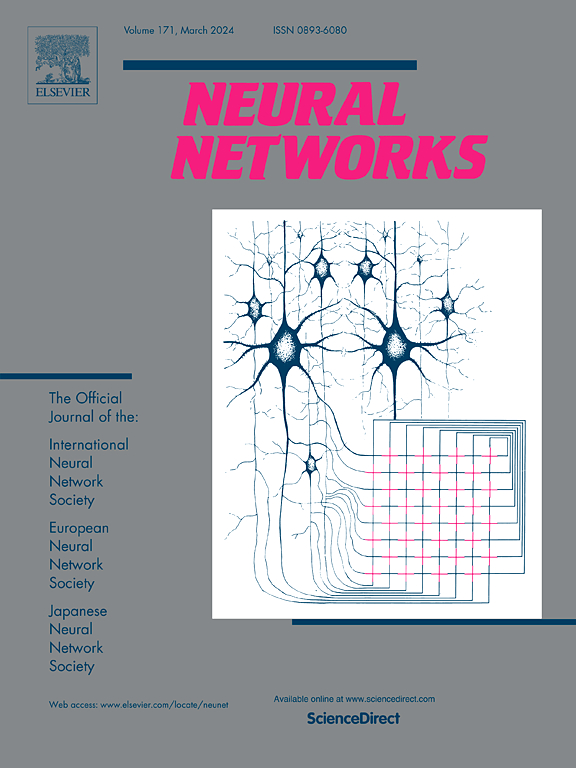基于语义感知和时间跨度耦合超图的下一篮推荐双塔模型。
IF 6
1区 计算机科学
Q1 COMPUTER SCIENCE, ARTIFICIAL INTELLIGENCE
引用次数: 0
摘要
下一个购物篮推荐(NBR)是推荐系统领域的一项重要任务,致力于根据对用户历史购物篮序列的分析,预测用户下一时刻的偏好。当前的 NBR 模型利用唯一身份(ID)信息来表示不同的用户和物品,并通过递归神经网络和分层时间衰减建模等顺序编码技术来捕捉用户的动态偏好,这些技术在 NBR 领域已占据了十多年的主导地位。然而,这些模型表现出两个显著的局限性,导致用户和物品的表示都不理想。首先,用户和条目表征的推导依赖于唯一的 ID 信息,这就忽略了交织在条目之间的丰富语义关系。其次,大多数 NBR 模型仍然局限于对单个用户的历史购物篮序列进行建模,从而忽略了用户和物品之间更广泛的全局协作关系。为了解决这些局限性,我们为 NBR 引入了具有语义感知和时间跨度耦合超图的双塔模型。该模型经过精心设计,可将语义关系和协作关系整合到用户和条目表征中。具体来说,为了有效捕捉丰富的语义关系,我们提出了一种分层语义关注机制,并通过大语言模型来整合项目的多视角文本语义特征,从而实现篮子表征学习。同时,为了明确捕捉全局协作关系,我们设计了一种时间跨度耦合超图卷积网络,以有效地模拟用户和物品之间的超图高阶结构连接。最后,我们使用多目标联合优化损失来优化语义和协作关系的学习和整合,从而实现推荐。在两个公共数据集上进行的综合实验表明,我们提出的模型在两个经典评估指标--召回率和归一化折现累积收益(NDCG)--上明显优于主流 NBR 模型。本文章由计算机程序翻译,如有差异,请以英文原文为准。
Dual-tower model with semantic perception and timespan-coupled hypergraph for next-basket recommendation
Next basket recommendation (NBR) is an essential task within the realm of recommendation systems and is dedicated to the anticipation of user preferences in the next moment based on the analysis of users’ historical sequences of engaged baskets. Current NBR models utilise unique identity (ID) information to represent distinct users and items and focus on capturing the dynamic preferences of users through sequential encoding techniques such as recurrent neural networks and hierarchical time decay modelling, which have dominated the NBR field more than a decade. However, these models exhibit two significant limitations, resulting in suboptimal representations for both users and items. First, the dependence on unique ID information for the derivation of user and item representations ignores the rich semantic relations that interweave the items. Second, the majority of NBR models remain bound to model an individual user’s historical basket sequence, thereby neglecting the broader vista of global collaborative relations among users and items. To address these limitations, we introduce a dual-tower model with semantic perception and timespan-coupled hypergraph for the NBR. It is carefully designed to integrate semantic and collaborative relations into both user and item representations. Specifically, to capture rich semantic relations effectively, we propose a hierarchical semantic attention mechanism with a large language model to integrate multi-aspect textual semantic features of items for basket representation learning. Simultaneously, to capture global collaborative relations explicitly, we design a timespan-coupled hypergraph convolutional network to efficiently model high-order structural connectivity on a hypergraph among users and items. Finally, a multi-objective joint optimisation loss is used to optimise the learning and integration of semantic and collaborative relations for recommendation. Comprehensive experiments on two public datasets demonstrate that our proposed model significantly outperforms the mainstream NBR models on two classical evaluation metrics, Recall and Normalised Discounted Cumulative Gain (NDCG).
求助全文
通过发布文献求助,成功后即可免费获取论文全文。
去求助
来源期刊

Neural Networks
工程技术-计算机:人工智能
CiteScore
13.90
自引率
7.70%
发文量
425
审稿时长
67 days
期刊介绍:
Neural Networks is a platform that aims to foster an international community of scholars and practitioners interested in neural networks, deep learning, and other approaches to artificial intelligence and machine learning. Our journal invites submissions covering various aspects of neural networks research, from computational neuroscience and cognitive modeling to mathematical analyses and engineering applications. By providing a forum for interdisciplinary discussions between biology and technology, we aim to encourage the development of biologically-inspired artificial intelligence.
 求助内容:
求助内容: 应助结果提醒方式:
应助结果提醒方式:


